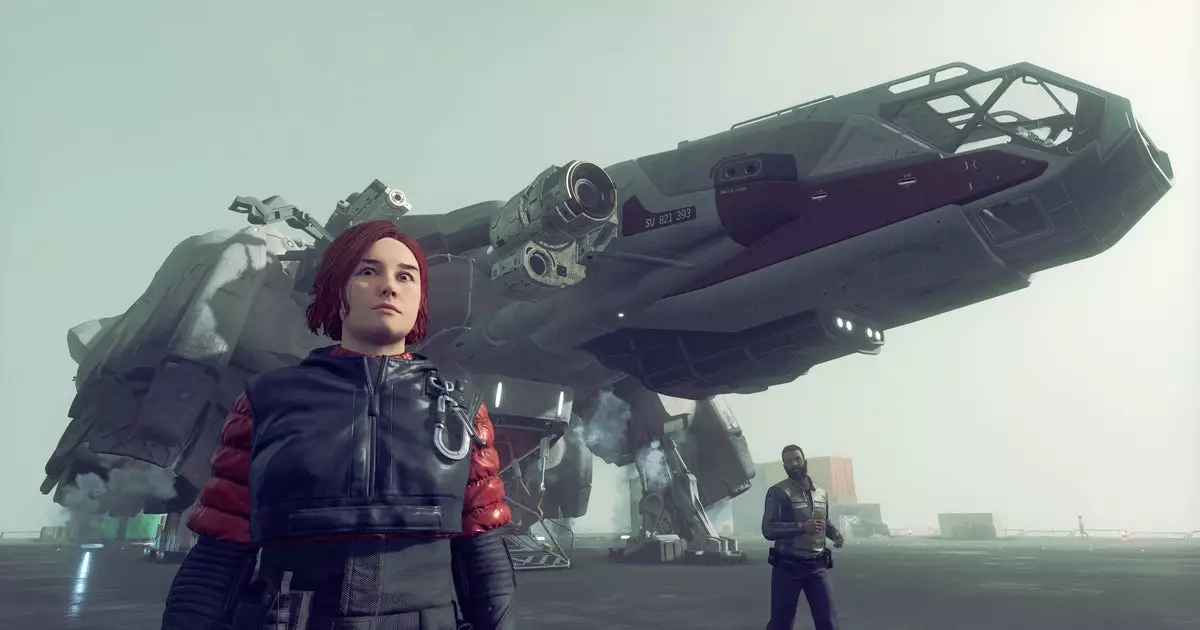Starfield, the much-anticipated space exploration game from Bethesda, has sparked discussions in the gaming community regarding its perceived emptiness. After its release, the game was criticized for feeling “small, cold, and unlived in,” a sentiment echoed by numerous players who had high hopes for a boundless galaxy filled with engaging interactions. However, a recent revelation by Dennis Mejillones, a former senior artist at Bethesda, has shed light on some of the technical and creative constraints that shaped the game’s final direction.
Mejillones, in an interview on the Kiwi Talkz podcast, elaborated on why Starfield lacks the visceral gore that characterizes other Bethesda titles like Fallout 4. Contrary to what many may have assumed, the absence of gruesome features was not solely guided by a desire for a more immersive narrative but was born from a maze of technical challenges. As it turns out, integrating such features into the game’s expansive and complex systems proved to be daunting. The artist mentioned the intricacies involved with the character suits and helmets, leading to complications that became overwhelming during development.
Creative Inspirations and Thematic Direction
One of the most insightful aspects of Mejillones’ commentary was his explanation regarding the thematic inspiration behind Starfield. Unlike Fallout, which is well-known for its dark humor and outrageous scenarios, including the hilarious but graphic Bloody Mess perk, Starfield was designed to be more grounded and realistic. Mejillones indicated that the development team drew inspiration from series like The Expanse and Star Trek, aiming for a narrative that captured a more serious tone in the vastness of space travel. This thematic choice undoubtedly influenced their decision to steer away from excessive violence and gore.
This venture into creating a more ‘low-key’ experience may have alienated some players yearning for a thrilling escapade. It raises the question: could a sprinkle of bloodshed have made the game more engaging without overshadowing its primary narrative focus? This argument often surfaces in discussions about narrative versus gameplay experience, especially in a genre known for its vast potential for experimentation.
A Splash of Gore or a Missed Opportunity?
While it is clear that a bloodier version of Starfield wouldn’t have mitigated its perceived shortcomings regarding gameplay depth, it certainly would have shaken things up. The absence of visceral elements may have stripped away layers of excitement that players often seek in action-oriented titles. One can’t help but wonder how a creative reimagining incorporating elements of intrigue—a ‘space shovel decapitation’ included—might have added visual interest and flair to the somewhat monochromatic universe of Starfield.
Ultimately, the aim was to create a captivating narrative experience nestled within a carefully crafted universe. Still, one can’t ignore that, for some, a lack of dynamic interactions or intense moments left the game feeling flat. As gamers continue to navigate these virtual realms, the balance between creative freedom and technical possibilities will undoubtedly remain a pivotal discussion point in the ongoing evolution of game development. Starfield stands not only as a testament to ambition but also as a reflection of the complexities involved in crafting a compelling universe, one that players will either cherish or critique.

